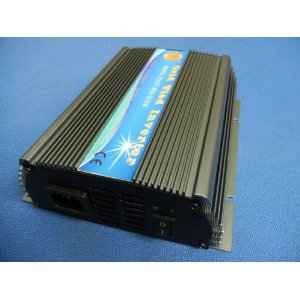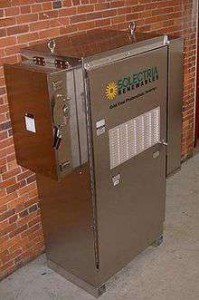If you currently have a renewable power system (solar panels, wind turbine, etc) implemented in your home or business establishment, one more way you can maximize its benefits by having it “grid-tied”. This means that the power you get from your renewable sources are converted in such a way that it can directly interact an with and supplement the power you get from the grid. You can also boost your carbon footprint reduction efforts with this by sharing some of your excess clean and green energy back into the grid for others to use and get compensated for it too! Ensupra Grid Tie Inverter 500W

Grid tie inverters (also known as grid-interactive inverters) are a special class of power inverters that enables you convert the output of your renewable energy setup into a form that can be “absorbed” back into the the utility power grid. With such devices, the direct current (DC) produced by solar panels, wind turbines or even residential fuel cell systems is converted to alternating current (AC) which is what you get from the power company. The main distinction of grid tie inverter devices from the usual DC to AC converter is that the former ensures that the AC current produced matches the voltage and wave frequency of the grid’s electric current. This means that the current should be in sync with the usual 50 to 60 Hz frequency and should be approximately 120 volts (or 240v).

As an incentive for households or businesses, many power companies and states (and countries) offer some form of compensation for surplus power produced by a renewable power system. This means that power companies or providers will actually pay you in one form or another for electricity that you share from your solar or wind power setup. The form of compensation can vary from area to area (and country to country) but the most usual are net metering schemes where you get some form of credits from electricity that you “return” to your utility provider. This can result in more savings for any home or business especially for those who are only partially dependent on renewable power sources and are still hooked into conventional power grids. Net metering and other compensation plans are usually governed by local company and government policies and the National Electric Code so you will need to refer with these entities them if you wish to get more information about this.
Installing a Grid Tie Inverter
Unless you know what you are doing, it is highly advised that you hire professionals when it comes to implementing a grid tied renewable energy source as these systems may require expert understanding especially when it comes to compatibility issues and there certainly are a lot of factors to consider. It’s best to contact a dependable local solar or wind power contractor, or, at the very least, a qualified electrician if you wish to install such a device or system.
I’m working hard to put together a directory of renewable power contractors all over the U.S. so please stay tuned.
Sources:
http://en.wikipedia.org/wiki/Grid-tie_inverter
http://www.nfpa.org